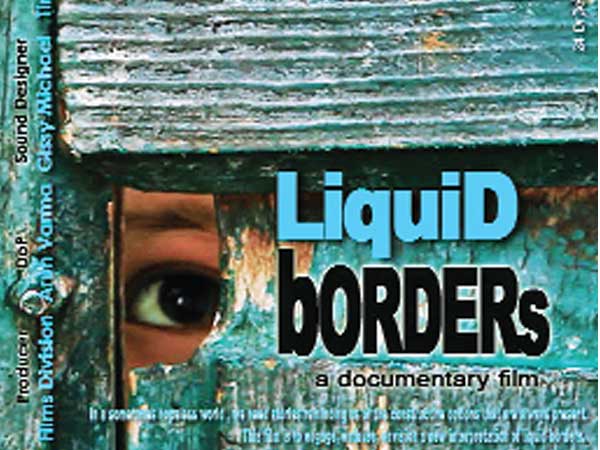
Barnali Ray Shukla’s documentary, Liquid Borders, has just won the critics’ award for best film at the first South Asian Short Film Festival held in Kolkata.
The film begins with a scene shot during Durga visarjan at the River Icchamati on the India-Bangladesh border. During this annual ritual, Bangladeshis sneak into India. The border between the two countries is porous as it is, and the river helps cover the illegal migration.
Later in the film, villagers living on the border talk about how people from the other side come towards India, steal their cattle, make the animals swim across to their country and sell them at a profit. For urban dwellers the idea of opening their hearts to outsiders has a different perspective, because they are not living on the edge or trying to protect meagre resources.
In the film, produced by Films Division, Shukla does not comment on the human passage between two countries — easy or tough — but wonders about the nature of the border itself.
She examines, with a poet’s words, a painter’s eye, and a dispassionate political stance, the visuals of borders with Pakistan, Bangladesh. China and Sri Lanka. The army and border security forces are always on alert, but for the people the politics of a border does not hamper daily living.
As a fisherman in Tamil Nadu says of crossing the Sri Lankan border, that they simply follow the fish; the fish does not follow them.
Shukla writes in her Director’s Note: “The documentary film finds its beginning, born out of the need to explore existing geographical and political boundaries of India, juxtaposed with, human, emotional and spiritual bridges. Geographically speaking, India is a peninsula. Three sides are flanked by water. Specifically the east, west and south. Incidentally, the north too, is serrated by mighty rivers. This makes boundaries of India fluid, inclusive and accessible to our neighbours. The same adjectives interpreted in the political jargon means, menace of porosity, infiltration and threat to security. The magnitude and the irony of this dichotomy is the need to address this subject, as a film. In a sometimes dark and hopeless world, we need stories reminding us of the constructive options that are always present. The film is to engage, enthuse and envision a new-found look at liquid borders.”
For the people who live on the border, life is uninterrupted by what goes in the world outside.
In a Ladakh village, Shukla captures the colour and solemnity of a wedding, as well as the cheerful games of kids, who are not concerned about what leaders in far off cities decide. A soldier at the border examines papers with extra care and comments on the illegality of it, but with her shots of birds, fish animals and stunning landscapes, Shukla seems to say that lines drawn on maps by humans are meaningless. When women are talking of how East and West Germany united, and discuss the impossibility of this happening between India and the neighbouring countries, the camera cuts away to a bunch of caged birds at play.
The film’s cinematographer Arun Verma captures nature in all its beauty, and also the casual attitude of people walking around in border towns, and men in uniform lowering their guard when their doesn’t seem to be signs of a skirmish with the other side. The threat of violence must hang above them at all times, so times of peace are more precious.
More than geographical, historical or political, Shukla concerns herself with the philosophical meaning of a border — that silence that lies “between being truthful and stating facts.”
Liquid Borders is not a solemn film about the differences between people divided by a line on a map or about the blood that is shed on account of it, but about how the human spirit thrives in spite of that border. Because lines can, and have, been frequently redrawn. So, the film seems to say, the real border is not on paper or on land but in the mind.
(Deepa Gahlot is a critic, columnist, editor,author and curator)





